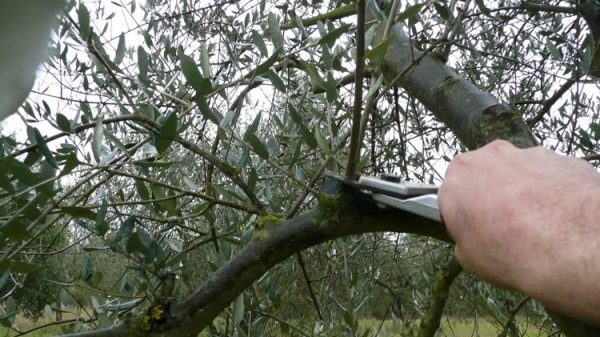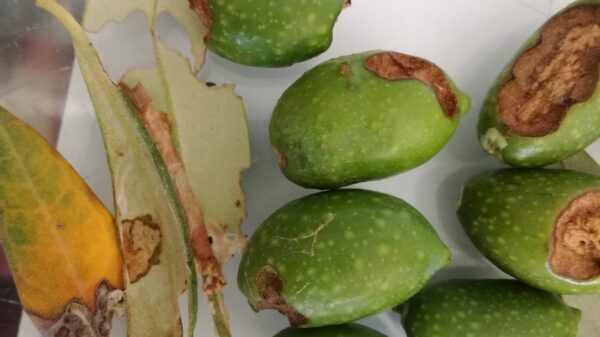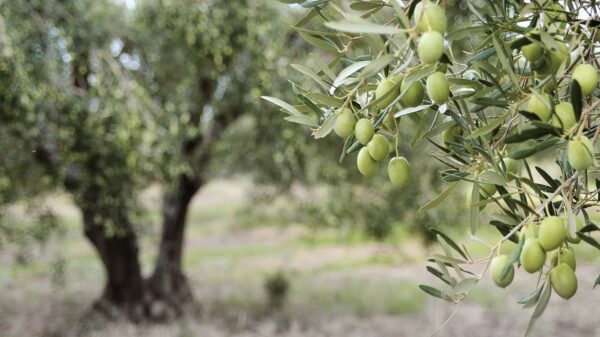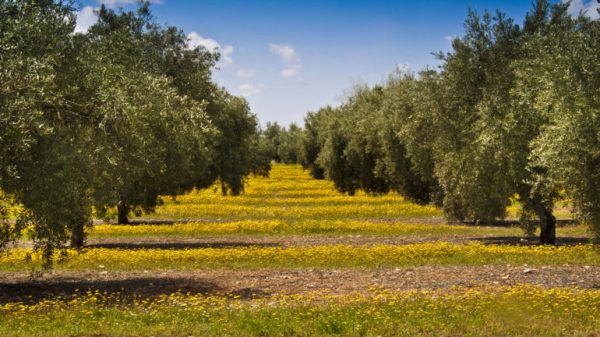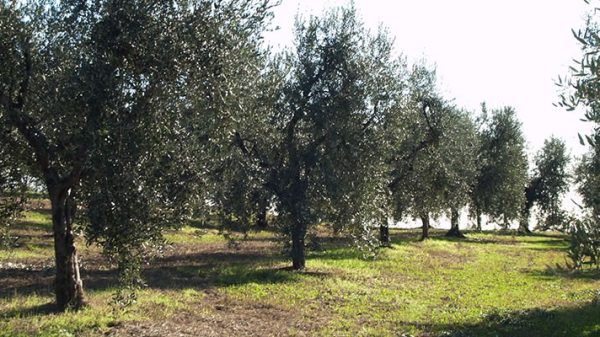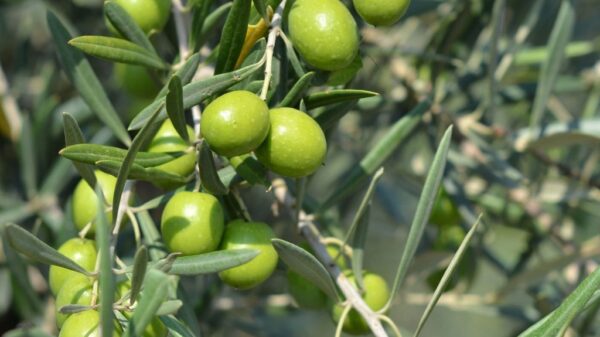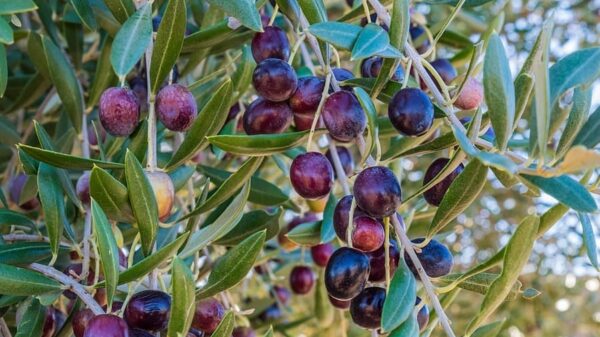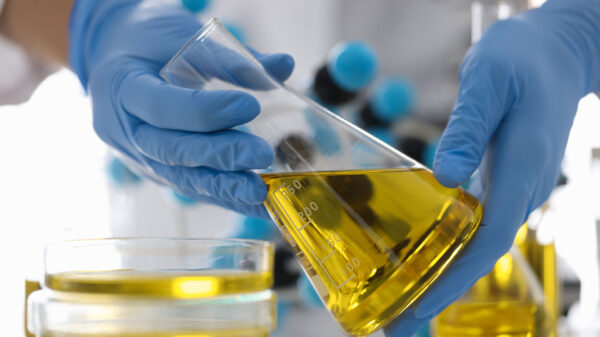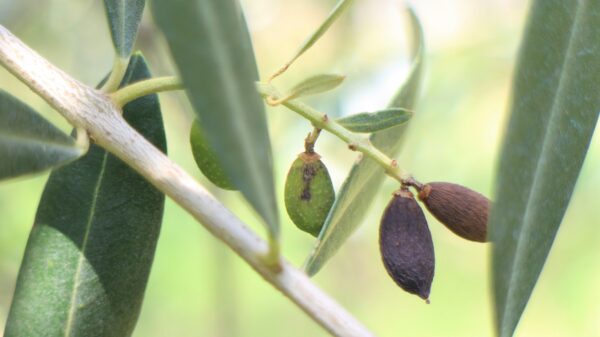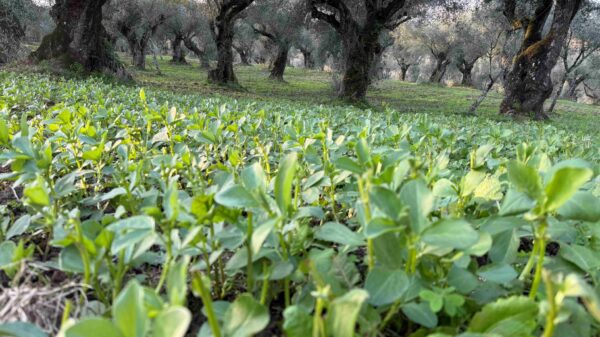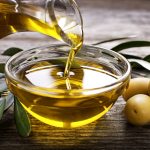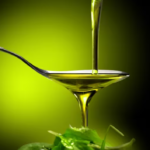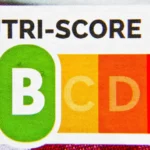La Olive scab it is caused by Pseudomonas sevastanoi pv. savastanoi, pathogenic bacterium Gram-negative: lives as an epiphyte on olive trees and can remain alive in the soil, adapts to multiple pH conditions and notable differences in temperature and humidity.
This bacterium can form, alone or with other microorganisms, on the surface of branches and leaves “biofilm”, that is, colonies of microbes which, by secreting an extracellular substance, composed of polysaccharides, proteins and other molecules, create a covering that protects them from external agents, including disinfectants brought by the olive grower.
Il Pseudomonas sevastanoi produces phytotoxins and enzymes, which degrade host plant tissues, negatively affecting plant growth and development. Among these phytotoxins, the best known is a phytohormone, called “coronatina”, which causes lesion growth, induction of tissue necrosis, inhibition of stomatal closure, and manipulation of plant immune responses.
This phytotoxicity could begin even before the bacterium penetrates the tissues of the host plant, causing growth slowdowns, reduction in leaf size, excessive branching, changes in the color of the leaves with yellowing, secretions such as exudates.
Symptoms of olive mange
It is certainly not easy to perceive these symptoms because they are confused with similar ones. Once the bacterium has penetrated inside the plant through micro-lesions, caused by hail, phytophages, pruning cuts and the use of facilitators, stimulates the plant to overproduce growth hormones, such as auxins and cytokinins, this causes an overabundant growth of the plant cells that form the knowns “tubercles”.
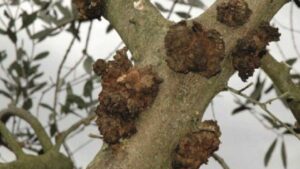
These should not be considered a mass of tissue that appears in an undifferentiated and uncoordinated manner compared to normal tissues; initially they have a regular and ovoid shape, then crevices form and this causes an anomalous arrangement and they grow as long as the bacterium is present, with dimensions ranging from a few millimeters to a few centimeters.
It is not yet clear whether the bacteria, once they enter the plant from a wound, can spread: it is believed that the bacterium is not capable of spreading in the plant on its own.
Infections form mainly on young branches where they can persist, continuing to grow from year to year and then disintegrate, or they can converge and entirely surround the branch itself. Rarely, they can be affected by Paseudomonas sevastaoi also the leaves, fruits and their peduncles. The inoculum that gives rise to the infectious process can come from the tubercles and, in particular, from the population of the pathogen residing on the surface of the plant. The populations of this pathogen are high and active mainly in spring and autumn due to the high humidity and mild temperatures, which facilitate the pathogen.
There are varieties of olive trees that may be more sensitive to Pseudomonas sevastanoi: This can vary based on the genetics of the plant, environmental conditions, having softer foliage, cultural practices, the presence of other pathogens or environmental stresses. As for those less susceptible, either more tolerant, there are the Leccino and Holm oak of the Horn.
The fight with the use of antagonistic microorganisms
At present the fight against olive scab is mainly entrusted to interventions with cupric products - as reported in a previous article – which, at least in part, manage to contain the harmfulness of the disease, particularly when wounds on the plant are caused by hailstorms, pruning, harvesting, in these cases the treatments should be carried out as soon as possible after the aforementioned events.
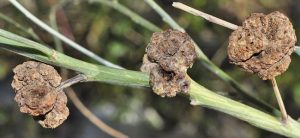
Among the methods of struggle, the use of becomes interesting isolated antagonistic microorganisms on the surface of branches and leaves of the olive tree such as the Bacillus subtilis, which produces a number of antibiotic compounds, such as bacitracin, and other antimicrobial enzymes and peptides, which work by damaging cell membranes or interfering with the metabolic processes of Pseudomonas sevastanoi.
Il Bacillus subtilisFurthermore, it is able to effectively colonize various environments, competing with other microorganisms, bacterial and fungal, for the available resources, effectively forming a physical barrier, preventing germination, mycelial growth and the subsequent establishment of pathogens in plant tissues.
Bacillus subtilis strain QST 713, marketed as QST 713 o Serenade, has natural bactericidal and fungicidal activity and as a biological control agent. The application of these antagonistic bacteria should be carried out in the spring and autumn periods.
This contrast method seeks to maintain a high biodiversity of microorganisms on the plant, some of which are also direct or indirect antagonists of the Pseudomonas sevastanoi.
AIPO Director
Interregional Association
Olive producers
Browse for free L'OlivoNews click , here.

